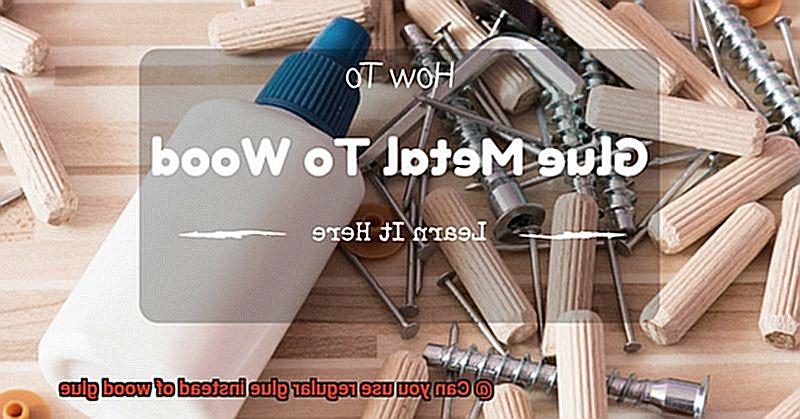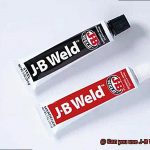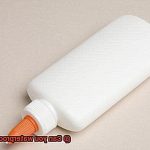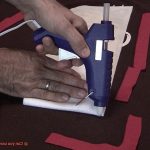Have you ever been in the middle of a woodworking project and realized that you’re out of wood glue? It’s a frustrating situation, but before you reach for regular glue, it’s important to understand the differences between the two.
Wood glue is specifically designed for woodworking projects. It has a stronger bond than regular glue and can withstand the stress and strain that comes with working with wood. Regular glue, on the other hand, is not formulated for woodworking and may not provide the same level of strength or durability.
So, can you use regular glue instead of wood glue? The answer isn’t straightforward. It depends on what type of wood you’re using and what kind of project you’re working on. For example, if you’re working with softwoods like pine or cedar, regular glue may be sufficient. But if you’re working with hardwoods like oak or maple, it’s best to stick with wood glue.
In this blog post, we’ll dive deeper into the differences between regular glue and wood glue. We’ll explore their chemical makeup, bonding strength, advantages and disadvantages, and when it’s okay to use one over the other. By the end of this post, you’ll have a better understanding of which type of glue is best suited for your project.
Don’t let a lack of wood glue derail your woodworking project. Read on to learn more about whether or not regular glue can be used as a substitute for wood glue.
What is Regular Glue?
Contents
- 1 What is Regular Glue?
- 2 What is Wood Glue?
- 3 Benefits of Using Wood Glue for Woodworking Projects
- 4 Can You Use Regular Glue Instead of Wood Glue?
- 5 How to Use Regular Glue for a Temporary Bond
- 6 Drawbacks of Using Regular Glue Instead of Wood Glue
- 7 Alternatives to Using Regular Glue and Wood Glue
- 8 Conclusion
Woodworking is a rewarding craft that requires precision, patience, and the right tools. When it comes to bonding wood pieces together, wood glue is the go-to adhesive for a strong and durable bond. However, what happens when you run out of wood glue and need to finish a project quickly? Can regular glue be used as a substitute? Let’s explore the world of regular glue and its potential use in woodworking.
Regular glue, also known as all-purpose glue or white glue, is a versatile adhesive that can be used on various surfaces such as paper, cardboard, fabric, and some plastics. It is typically made from polyvinyl acetate (PVA) and water and comes in both liquid and solid forms. Regular glue is commonly used for arts and crafts projects, school assignments, and household repairs.
While regular glue may bond with wood to some extent, it lacks the strength and durability of wood glue. Wood glue is specifically formulated to bond with wood fibers and can withstand pressure, tension, and shear forces that regular glue may not be able to handle. Regular glue may also dry clear or translucent, which can affect the appearance of the wood.
Moreover, regular glue may not hold up well in situations where the wood will be exposed to moisture or temperature changes. This can cause the glue to weaken or break down over time, potentially causing the wood joint to come apart. It’s important to note that regular glue is not designed for use on wood surfaces.
There are different types of wood glue available on the market, including PVA (polyvinyl acetate) glue, epoxy, and polyurethane glues. Each type has its own unique properties and is suitable for different woodworking projects. PVA glue is ideal for general woodworking projects, while epoxy is better suited for bonding dissimilar materials like metal or plastic. Polyurethane glues are waterproof and can be used for outdoor projects.
What is Wood Glue?
Wood glue is a unique adhesive that has been specially formulated to bond with wood fibers. This essential tool is a must-have for any woodworking project, including furniture making, construction work, and other woodworking endeavors. But what sets wood glue apart from regular adhesives?
Unlike regular glue, which may be suitable for arts and crafts projects, wood glue can handle pressure, tension, and shear forces that regular glue simply cannot withstand. This makes it the perfect adhesive for bonding wood pieces together in woodworking projects.
There are several different types of wood glue available on the market, and each one has its own unique characteristics and strengths. PVA (polyvinyl acetate) glue is a popular option due to its affordability and ease of use. Epoxy offers a stronger bond and greater resistance to moisture. Hide glue, made from animal collagen, has been used in woodworking for centuries and is still favored by some artisans today. Cyanoacrylate (super glue) is another option that can be used for small repairs or in situations where fast bonding is necessary.
One of the most significant benefits of using wood glue over regular glue is its ability to penetrate into the pores and fibers of the wood. This creates a bond that is much stronger than surface-level adhesives. Additionally, wood glue can withstand changes in temperature and humidity without losing its strength or flexibility.
Benefits of Using Wood Glue for Woodworking Projects
This specialized adhesive is formulated to bond wood surfaces together, creating a strong and durable hold that can withstand everyday wear and tear. As an expert in the field, I am here to share with you the many benefits of using wood glue for your woodworking projects.
First and foremost, wood glue can create a bond that is stronger than the wood itself. This means added support and stability for your finished project, ensuring it will withstand the rigors of everyday use. No more worrying about your shelves collapsing or your table legs wobbling.
But that’s not all – wood glue has the remarkable ability to fill gaps and cracks in the wood surface. This is particularly useful when working with hardwoods that tend to crack and split easily. With its ability to penetrate into the pores of the wood, it fills in any imperfections, creating a smooth and even finish.
Another great benefit of using wood glue is its sanding properties. Once it has dried, it can be easily sanded down to create a smooth and even surface that is perfect for staining or painting. This makes it an ideal choice for woodworking projects where aesthetics are important.
Lastly, wood glue is water-resistant, making it perfect for outdoor projects such as decking or outdoor furniture. It can withstand exposure to rain, snow, and other weather conditions without losing its strength or integrity.
Can You Use Regular Glue Instead of Wood Glue?
The question on everyone’s mind – can regular glue be used instead of wood glue? The answer is a resounding NO, and here’s why.
Wood glue is specifically designed for woodworking projects, with the ability to penetrate the pores of the wood and create a bond that is stronger than the wood itself. Regular glue, while versatile, does not provide the same level of adhesion in woodworking.
Let’s delve into the details. Here are three reasons why regular glue cannot replace wood glue:
Strength and Durability:
Wood glue creates a bond that is stronger than the wood itself, ensuring longevity and durability. In contrast, regular glue lacks this strength and may not hold up as well over time when it comes to woodworking projects.
Penetration of Wood Fibers:
The consistency of wood glue is thicker than regular glue, allowing it to fill gaps and produce a smooth surface. Additionally, wood glue penetrates the fibers of the wood, which is crucial for creating a strong bond. Regular glue, however, doesn’t penetrate in the same way, leading to weaker adhesion.
Drying Time:
Wood glue has a longer drying time than regular glue, which offers flexibility during assembly. This feature is particularly useful for complex woodworking projects where adjustments need to be made.
In conclusion, using regular glue in place of wood glue may seem like an easy solution but could lead to subpar results. Woodworking projects demand a specific adhesive like wood glue that provides ultimate strength, durability, and consistency.
How to Use Regular Glue for a Temporary Bond
When it comes to woodworking, ensuring a strong and long-lasting bond is crucial. While wood glue is often the go-to option, regular glue can also be used for temporary bonds in a pinch. Regular glue is water-based and dries clear, making it a popular choice for school projects and crafts.
However, it may not be as strong and durable as wood glue. Here are some tips on how to use regular glue for a temporary bond on wood:

Choose the right type of glue
Not all types of regular glue are suitable for temporary bonding. Look for a water-based glue that dries clear and has a strong hold. Avoid glues that are too runny or too thick, as they can be difficult to apply and may not hold well.
Prepare the surfaces
Just like with wood glue, it’s important to prepare the surfaces before applying regular glue. Make sure they are clean, dry, and free of any dust or debris. Sand the surfaces lightly to create a rough texture that will help the glue adhere better.
Apply the glue
Applying a thin layer of glue to one of the surfaces using a brush or roller is essential. Be careful not to apply too much, as this can cause the glue to seep out from the edges and create an unsightly finish.
Clamp the surfaces
To ensure that the bond is firm, press the two surfaces together firmly and hold them in place with clamps or weights. It is important to ensure that surfaces are aligned correctly and leave them to dry for at least an hour.
Remove excess glue
After the glue has dried, use a damp cloth or sandpaper to remove any excess glue that may have seeped out from the edges. This will give your project a clean and professional look.
It’s important to note that while regular glue can be used for temporary bonds, it may not be as strong and durable as wood glue. If you’re working on a project that requires a long-lasting bond, it’s best to use wood glue instead. Regular glue is ideal for temporary projects or for making quick repairs around the house.
When it comes to using regular glue instead of wood glue, it’s important to note that regular glue is not specifically designed for use on wood. However, in some cases, regular glue can be used as a temporary solution for bonding wood.
One way to use regular glue for a temporary bond on wood is by applying the glue in a thin layer and allowing it to dry completely before bonding the pieces together. This will create a bond that is strong enough to hold the pieces together temporarily but may not be as durable as a bond made with wood glue.
Drawbacks of Using Regular Glue Instead of Wood Glue
When it comes to woodworking, choosing the right adhesive is crucial for ensuring strong and durable bonds. While regular glue may sound like a tempting alternative to wood glue, there are several drawbacks to consider before making the switch.
Firstly, regular glue is not formulated for use on wood, which means it may not provide the same level of adhesion as wood glue. Wood glue is specially designed to penetrate the grain of the wood and create a robust bond that can withstand stress and strain over time. Regular glue may not be able to penetrate the wood grain as effectively, leading to weaker and less reliable joints.
In addition, regular glue may not be suitable for certain weather conditions. Woodworking projects exposed to heat, moisture, or extreme temperatures require a specialized adhesive that can withstand such conditions. Regular glue may break down or lose its grip over time if used in such situations.
Furthermore, regular glue may not be as effective at filling gaps or cracks in wood as wood glue. Wood glue has a thicker consistency that allows it to fill in any imperfections in the wood surface, creating a seamless bond. Regular glue may not have the same filling properties and could leave gaps or spaces in the joint that weaken its overall strength.
Lastly, using regular glue instead of wood glue could also affect the appearance of your finished project. Regular glue often dries clear but may leave behind a residue or discoloration that can be difficult to remove or cover up. Wood glue, on the other hand, dries to a natural wood color that blends seamlessly with the surrounding wood fibers.
Alternatives to Using Regular Glue and Wood Glue
In the world of woodworking, choosing the right type of glue can make all the difference in the success of your project. While regular glue and wood glue are familiar options, they may not always provide the necessary strength and durability for certain projects. Fortunately, there are several alternatives available that can offer unique benefits and properties.
One alternative to consider is epoxy glue, which is a two-part adhesive that creates a strong bond between surfaces. Unlike regular glue or wood glue, epoxy has a longer working time, allowing you to make adjustments before it sets. It also works on a variety of materials including wood, metal, and plastic, making it a versatile choice for many projects.
Another option to consider is polyurethane glue, which is known for its water-resistant properties. As it dries, it expands and fills any gaps or imperfections in the wood, providing a strong bond that can withstand exposure to moisture. This makes it ideal for outdoor projects or those that will be exposed to water.
For those looking for a quick-drying solution, cyanoacrylate glue (also known as superglue) is a strong adhesive that bonds surfaces together quickly. However, it may not be suitable for larger woodworking projects as it dries too quickly and does not allow for adjustments.
Finally, hide glue is an old-fashioned option that has been used in woodworking for centuries. Made from animal collagen, it has a strong bond that can be easily reversed with heat and moisture. Hide glue is particularly useful for antique restoration projects and can be used on both softwoods and hardwoods.
Also Read: Can you use PVA glue to stick fabric to wood?
Conclusion
To sum up, the question of whether regular glue can replace wood glue is a bit tricky. Although it may suffice for some woodworking projects, it lacks the robustness and endurance of wood glue. Specifically engineered to bond with wooden fibers, wood glue can withstand pressure, tension, and shear forces that regular glue might not be able to handle. Furthermore, it possesses the ability to seep into the pores and fibers of the wood, establishing a bond that’s significantly stronger than surface-level adhesives.
It’s worth noting that different types of wood glue are available in the market such as PVA (polyvinyl acetate) glue, epoxy, and polyurethane glues. Each type has its own distinct properties and is appropriate for various woodworking projects.
While regular glue may work as a temporary fix for bonding wood in an emergency situation, it might not be as durable or sturdy as wood glue. Additionally, regular adhesive isn’t formulated for usage on wooden surfaces and may not hold up well when exposed to moisture or temperature changes.
When selecting an adhesive for your woodworking project, it’s best to choose a specialized one like wood glue that offers maximum strength, durability, and consistency.






